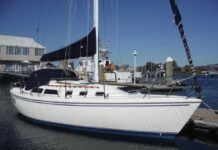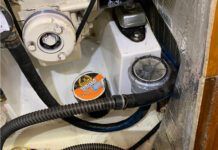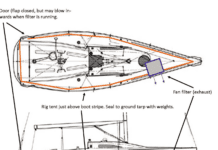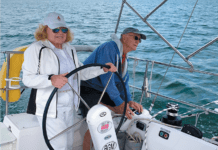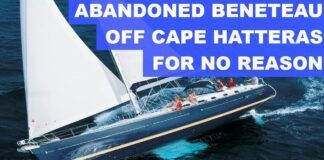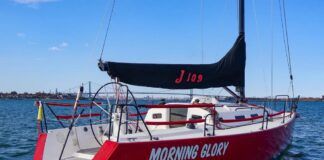Heavy Weather Myths Debunked
Before getting into fitting-out for heavy weather and preparing for storms before they arrive, lets debunk a few common myths. First, the notion that with todays excellent satellite-weather forecasting, you can essentially avoid heavy weather. This sanguine notion is the voice of inexperience. If you plan to sail across oceans and cruise the world, you will encounter heavy weather. Think about how accurate local forecasts are in your hometown. Now add the vagaries of the ocean environment and the uncertainties of changing climate to the mix and you can pretty well count on encountering some unexpected storms in your travels. The Azores approach storm of 2007 was not forecast and caught much of the Atlantic crossing fleet by surprise.
The second myth is that you can outrun heavy weather if your boat is fast enough. While there is some truth to the notion that you can limit your exposure to storms by taking aggressive steps to sail out of harms way, particularly if you know the path of the storm, generally this is not viable for most cruising boats traveling at 6 to 7 knots. Time is better spent preparing for the ensuing blow. I do have to admit, though, that I have never understood why boats lying in the predicted track of a tropical storm don’t move out of the storms way rather than assuming the bunker mentality and hunkering down for the blow. If you are at anchor in Antigua, in the Leeward Islands of the Caribbean, and a hurricane is a couple of days away and tracking west, why not make all haste south to Grenada or, better yet, Trinidad? Its 300 or 400 miles due south, and in two days you can be completely out of storms swath of destruction. Todays tropical storm track models are very accurate, at least in the big picture, so the choice of where to sail is usually very clear. I think this is a better strategy than doubling and tripling your mooring lines and offering prayers and bribes to every available deity in hopes that the storm will change course.
The 2012 tragic loss of the replica tall ship Bounty in Hurricane Sandy points to flaws in both strategies mentioned above. If there ever was a time for hunkering down, this was it, as Sandy spread terror across the Atlantic like a malignant tumor. While I understand the skippers angst about having the storm surge damage his ship in port, the potential for losing the ship and the crew by taking what in reality was a movie prop to sea in hurricane conditions was a terrible combination of arrogance and negligence. Captain Robin Wallbridge and crewmember Claudine Christian paid for this mistake with their lives, and only heroic actions from the Coast Guard prevented more loss than life.
There was no way the Bounty was in a position to outmaneuver Sandy, but whats difficult to understand is why she didnt at least try. With the storm tracking northwest toward the New Jersey shore, the Bounty cleared out of New London, Connecticut, and, after rounding Montauk Point on the east end of Long Island, laid a course right toward the approaching storm. No attempt was made to outflank the storm by sailing east. Nobody knows for sure why Wallbridge sailed back toward the coast and ultimately collided with the storm off Cape Hatteras.
John Kretschmer has logged more than 300,000 offshore sailing miles and his new book, Sailing a Serious Ocean is filled with not only stories of his voyages but sailing tips and advice, no sailor should be without. To purchase Sailing a Serious Ocean, go to Practical Sailors website now.



